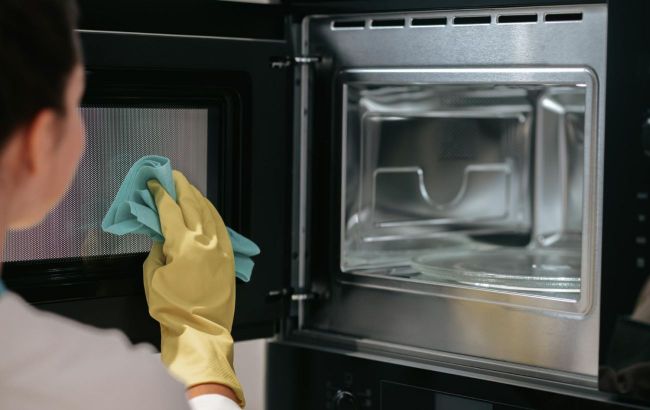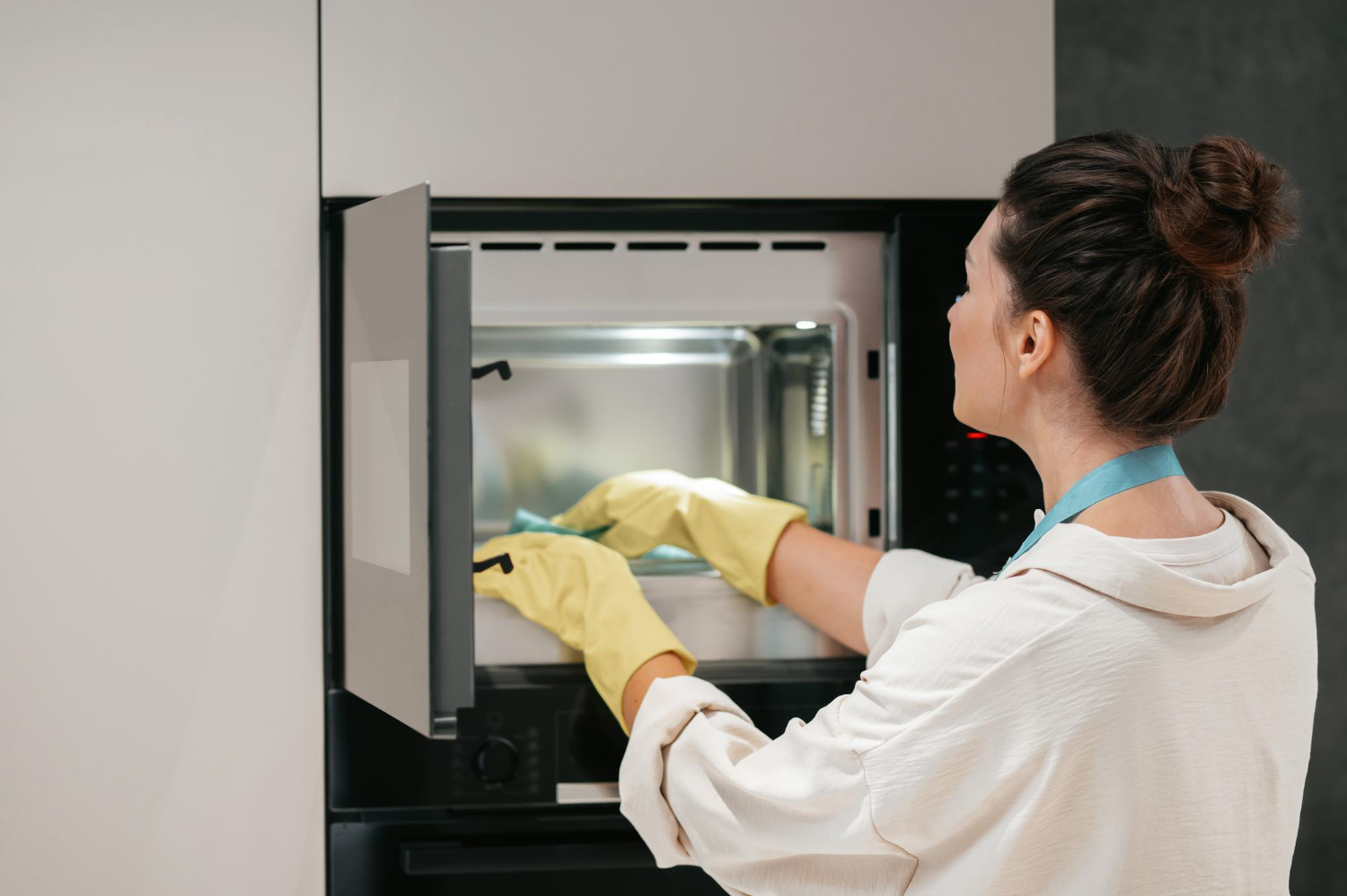7 life hacks that can help clean your microwave without scrubbing
 Cleaning a microwave of dried grease can be challenging (photo: Freepik)
Cleaning a microwave of dried grease can be challenging (photo: Freepik)
Over time, any clean microwave becomes dirty due to the constant reheating of various foods. Typically, stubborn grease needs to be scrubbed off the walls of the appliance. However, some hacks can help you quickly clean your microwave without scrubbing.
Here are tips that will help clean your microwave effortlessly.
Boil water
Minor stains can be softened with steam. To do this, pour water into a microwave-safe bowl and place it in the microwave for a few minutes until the water boils.
It’s recommended to leave the bowl in the closed microwave for about 5 minutes so that the steam can soften the grease. Then, you can easily wipe it down with a soft cloth.
Boil water with dish soap
For tougher stains, steam from plain water may not be enough. One hack is to add dish soap. Fill a microwave-safe bowl with 1 cup of water and add 1 teaspoon of dish soap.
Heat the mixture in the microwave for about two minutes to create steam, but do not let it boil. Allow the mixture to sit for three minutes before opening the microwave.
Carefully remove the bowl using kitchen gloves and wipe the inside of the microwave with paper towels.
Boil Water with baking soda
Since baking soda is a mild alkali, it is perfect for removing grease and other stains in your home, including those that may have accumulated in the microwave.
To clean your microwave with baking soda without scrubbing, fill a microwave-safe bowl with 1 cup of water and 2 tablespoons of baking soda. Place it in the microwave and set the timer for three to five minutes.
This will eliminate unpleasant odors and steam away stubborn stains. Then, wipe down the microwave with a cloth.
Soak with vinegar
Soaking with vinegar is a reliable method for many household items, including the microwave. Vinegar has antimicrobial and antibacterial properties and will clean your microwave of any unpleasant microorganisms that may be hiding in old food residues.
For this method, spray the inside of the microwave with white vinegar, let it sit for 15 minutes, and then wipe the surface with a microfiber cloth, rinsing the cloth while you clean. Remove, wash, and dry the glass plate, then place it back in the microwave.

Vinegar breaks down grease on the walls of the microwave (photo: Freepik)
If you don't have distilled white vinegar on hand, you can use apple cider vinegar while following the same method.
Boil vinegar
If the stains are quite stubborn, you can boil vinegar to let the steam dissolve the grease. Fill a microwave-safe bowl with 2 cups of water and add 2 tablespoons of white vinegar.
Add a few drops of your favorite essential oil if you want to leave a pleasant scent; the only downside to cleaning with vinegar is the strong odor it leaves behind. Then, microwave on high for 2-3 minutes.
Carefully remove the bowl using kitchen gloves. Dampen a clean cloth in the bowl and wipe away the grease and dirt.
Boil water with lemon
Lemon contains acid, which can also help remove dirt in the microwave without scrubbing. Fill a glass bowl with 3-4 cups of hot water, then cut the lemon into pieces and toss them into the water.
Place the bowl with water and lemons in the microwave for about 3-5 minutes until the water boils. Wait for the steam to dissolve the dirt - do not open the door for at least five minutes.
If the dirt hasn’t dissolved by then, put the water back in the microwave for another minute, wait, and then wipe the dirty surface with a damp microfiber cloth.
Boil water with lemon juice
You can replace fresh lemon with concentrated store-bought lemon juice. For this, add 2-3 tablespoons of lemon juice to a bowl with 3-4 cups of hot water.
Turn on the microwave for 3-5 minutes to boil the water. Wait about 5 minutes without opening the appliance door, and then wipe away the grease with a cloth.
The article was based on sources including Real Simple, Ideal Home, and Southern Living.

